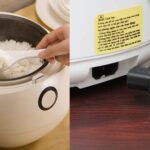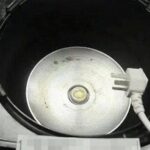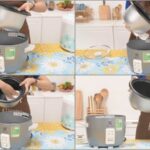Before deciding whether to replace your rice cooker, it’s worth inspecting these four areas to ensure they’re properly cleaned. Regular maintenance of these crucial spots will enhance your rice cooker’s performance, resulting in faster cooking, tastier rice, and significant energy savings.
1. Heating Plate
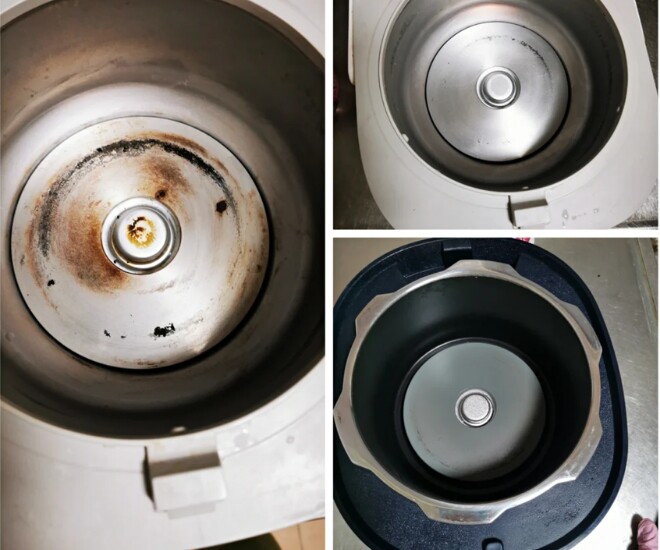
At the bottom of your rice cooker lies a crucial heating plate, responsible for generating heat. During operation, it transfers heat to the inner pot, cooking your food. Over time, this plate can become caked with grime, causing it to appear dull and function less efficiently. A dirty heating plate not only compromises cooking quality but also consumes more energy and prolongs cooking times.
Some people mistakenly believe that the heating plate is directly connected to the power source and cannot be cleaned with water, so they neglect its maintenance. This oversight leads to increased energy consumption by the rice cooker over time. To maintain the efficiency of your rice cooker, it’s essential to regularly wipe down the heating plate.
An effective tip is to use a cleaning pad designed for the purpose, or you can even apply toothpaste. Simply squeeze a small amount of toothpaste onto the plate and gently rub it with a dry cloth until the grime comes off. This method not only saves energy but also ensures your meals are always delicious and of high quality.
2. Inner Lid
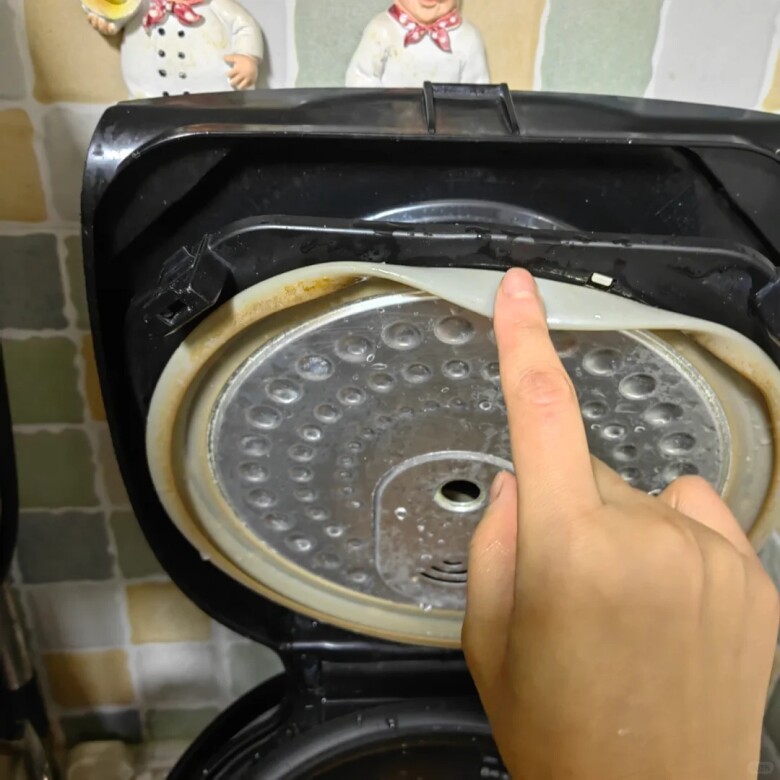
Rice cookers feature an essential inner lid with a rim equipped with a sealing gasket. This gasket ensures a tight seal, aiding in faster and more even cooking. However, if this gasket becomes dirty or loose, it can fail, impacting the cooker’s performance. Consequently, cooking times may lengthen, and the appliance will consume more energy.
Additionally, if the inner shell is not regularly cleaned, bacteria can proliferate and affect the flavor of your food. Therefore, it’s necessary to disassemble and clean the inner shell of your rice cooker. Make sure to remove mold and grime, then dry it thoroughly before reassembling.
For older rice cookers, the inner shell may not be removable. If your family uses such a cooker, it’s advisable to frequently wipe the shell with a damp cloth, especially if it has been in use for an extended period. If the shell still doesn’t come clean, consider investing in a new rice cooker, as ineffective cleaning can leave behind dirt and bacteria, compromising the quality of your family’s meals.
3. Steam Vent
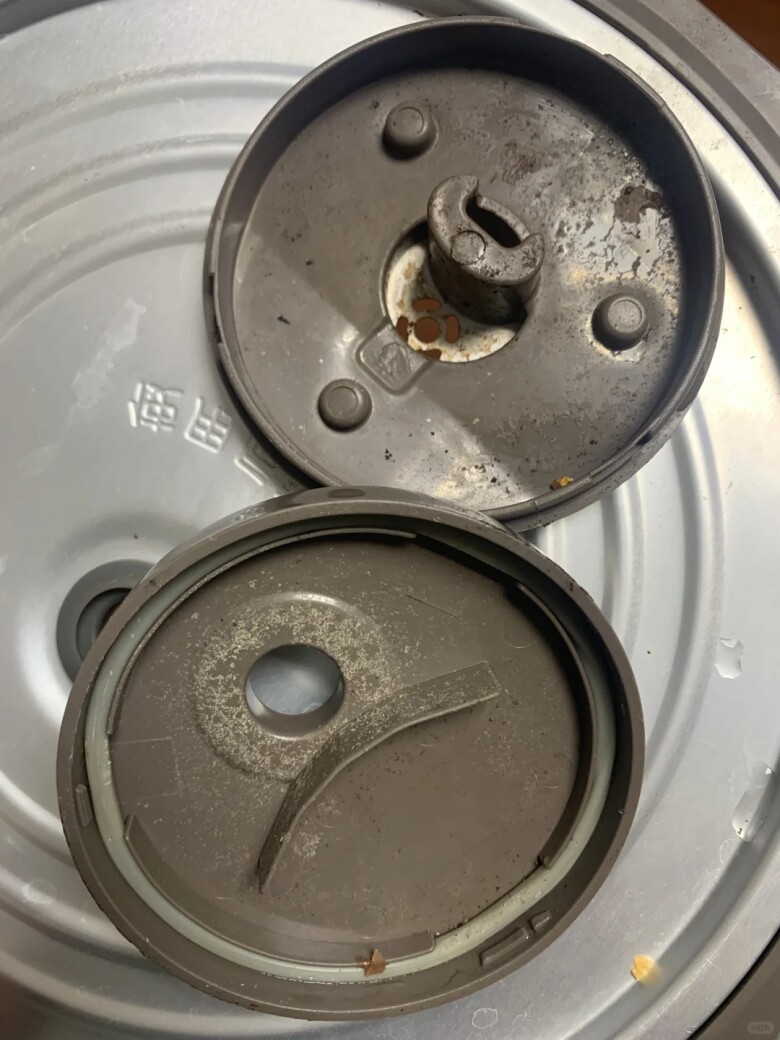
Rice cookers have an essential steam vent on the lid, often overlooked during cleaning as it’s merely a vent. However, during cooking, especially when preparing sticky dishes like porridge, food particles can splatter and clog this vent. If left unattended, the food residue will dry and hinder steam release, impacting the cooker’s performance.
Cleaning the steam vent is straightforward. Most rice cooker steam vents can be easily detached. Simply open the outer lid covering the vent and rinse it with water. After cleaning, securely reassemble the vent. This simple maintenance step will keep your rice cooker functioning optimally and ensure your meals remain tasty and of high quality.
4. Power Socket
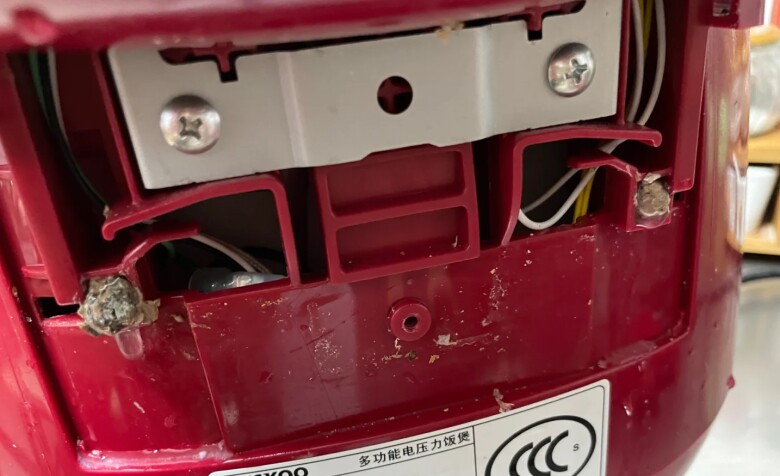
The power socket of a rice cooker is often overlooked during cleaning, as it is directly connected to the power source. However, over time, it can accumulate dust and food residue, especially when cooking soups or liquids that may spill and settle in the socket.
Neglecting to clean the power socket can not only lengthen cooking times but also pose safety hazards. Therefore, it’s essential to pay attention to this area and not underestimate its maintenance needs.
When cleaning the power socket, be careful not to let water splash into it. Simply use a dry cloth to wipe away any dust or food residue. This simple and effective method will help your rice cooker perform better and ensure your family’s safety during every meal.
The Magic of Three: A Guide to Saving on Your Electricity Bill
The rice cooker needs to be regularly cleaned and maintained; otherwise, it will become a dirty, smelly, and costly appliance. Over time, burnt rice and residue can build up, causing an unpleasant odor and even increasing your electricity bills. Regular cleaning is essential to keep your rice cooker in top condition and ensure your meals are always tasty and healthy.
“Is Your Rice Cooker Ruining Your Rice? Check This Part to Improve Your Cooking Game”
The heating element, also known as the “hotplate” or “heating coil,” is a crucial component of your rice cooker, responsible for generating the heat that cooks your rice perfectly. It’s similar in function to an electric stove, but designed specifically for your rice cooker, ensuring even and efficient heating for that perfect batch of fluffy rice every time.

























